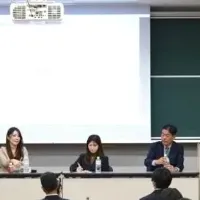
Unlocking the Secrets of Longevity: The Genome of the Red Sea Urchin
Unveiling the Genome of the Red Sea Urchin
The red sea urchin, scientifically known as Mesocentrotus franciscanus, stands out as one of the longest-living creatures on our planet, often exceeding lifespans of 100 years while showing minimal signs of aging. With this fascinating attribute, researchers at the Gloucester Marine Genomics Institute (GMGI) have embarked on an ambitious project to decode the genome of this remarkable marine animal, hoping to shed light on the biological mechanisms behind longevity and healthy aging.
GMGI's efforts were highlighted in a recent publication in the journal Cell Reports, which became the cover story. The study, primarily led by Andrea Bodnar, Ph.D., and a dedicated team including Jennifer Polinski, Kate Castellano, Ph.D., and Katherine Buckley, Ph.D., is pioneering the red sea urchin as a key model organism for anti-aging and anti-cancer studies.
Red sea urchins, due to their close genetic connections to humans, have become vital models in developmental biology research. However, GMGI has turned the focus toward understanding how these resilient creatures avoid the aging process, which can offer significant insights for human health as we strive for longer, healthier lives. According to Dr. Bodnar, the sequenced genome reveals new perspectives on the molecular, cellular, and systemic features that underpin longevity.
The Genetic Insights Gained
The genome sequencing provides an invaluable comparison against shorter-lived sea urchin species. This comparative analysis could uncover how the red sea urchin maintains its exceptional lifespan free from aging-related degradation and diseases. Dr. Bodnar explained, “The sequenced genome presents an opportunity to gain insights into the mechanisms that promote longevity and healthy aging.”
This study identified expanded families of genes associated with the innate immune system, as well as multiple copies of tumor suppressor genes which contribute to the creature's resistance against cancer. The findings suggest that mechanisms associated with mitochondrial function and protein homeostasis play crucial roles in the remarkable longevity of the sea urchin.
Implications for Human Health
Jennifer Polinski, a co-lead author of the research, emphasized the potential for these findings to extend beyond marine biology. “Many genes and pathways we notice in sea urchin genomes are also present in the human genome. Understanding their roles in the biological success of sea urchins can provide insights into human health as well,” she noted. In particular, the roles of tumor suppressor genes in protecting against cancer in sea urchins may eventually inform new preventative strategies or treatments for humans.
The insights garnered from the red sea urchin genome are not only significant for understanding the biology of these echinoderms but also open avenues for research that could revolutionize approaches to treat or prevent age-related degenerative diseases in humans. Dr. Bodnar noted that the genome acts as a critical resource for future studies aimed at deciphering how these sea creatures sidestep age-related decline.
GMGI's Broader Mission
The Gloucester Marine Genomics Institute is dedicated to confronting major challenges facing our oceans, human health, and the environment through advanced scientific research. Situated on Massachusetts' historic waterfront, GMGI plays a crucial role in economic development while providing education and training for future scientists through programs like the Gloucester Biotechnology Academy, designed to train high school graduates as laboratory technicians.
The rich genetic information derived from the red sea urchin could illuminate pathways to ensure humans enjoy longer, healthier lives, all while reinforcing GMGI's role at the forefront of innovative marine genomics research. As studies continue, the correlation between marine longevity and human health may prove ground-breaking, merging the worlds of marine biology and medical advancement for a healthier future.
Topics Other)










【About Using Articles】
You can freely use the title and article content by linking to the page where the article is posted.
※ Images cannot be used.
【About Links】
Links are free to use.